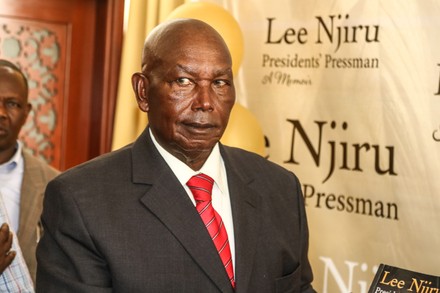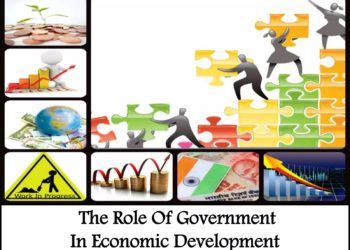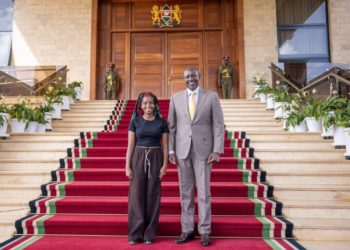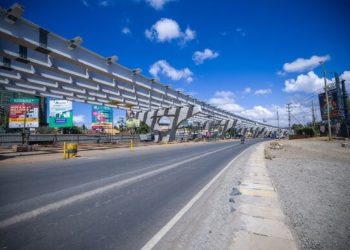For over four decades, Lee Njiru served in the shadows of Kenya’s highest office, navigating the complex world of power, influence, and image management as the Public Relations Officer for two of Kenya’s most formidable leaders, Jomo Kenyatta and Daniel arap Moi. From the early days of independence through the turbulent political shifts that shaped the nation, Njiru’s proximity to the country’s top office provides a rare glimpse into the inner workings of the Kenyan presidency.
In a candid interview on Citizen TV, Njiru shared untold stories and insights from his years of service, offering a unique perspective on the personalities and leadership styles of Kenya’s first two presidents. His narrative, woven with personal anecdotes and historical context, sheds light on the delicate balance of power, loyalty, and public perception that defined his role in the corridors of power.
The Burden of Power and Responsibility
Njiru’s journey began in the 1970s when he was appointed to serve as the Public Relations Officer for President Jomo Kenyatta, a position that placed him at the heart of Kenya’s emerging political landscape. “Kenyatta was a man of immense authority,” Njiru recalled. “He commanded respect and had a presence that could silence a room. My job was to ensure that this image of strength was maintained in the eyes of the public.”
Managing the public image of a leader like Kenyatta was no small task. Njiru described the first president as a man deeply aware of his status and legacy. “Kenyatta was always conscious of how history would judge him. He was meticulous about his public appearances, speeches, and even the way he was photographed,” Njiru explained. This attention to detail was crucial in projecting an image of a strong, decisive leader, especially during a time when Kenya was navigating the complex challenges of post-independence governance.
Transition to a New Era
The transition from Kenyatta to Daniel arap Moi marked a significant shift in Kenya’s political landscape, and for Njiru, it was a period of both continuity and change. While his role remained largely the same, the nature of the presidency under Moi presented new challenges. Unlike Kenyatta, who ruled with an iron fist, Moi’s leadership style was more consultative and approachable, though no less authoritative.
“Moi was different from Kenyatta in many ways,” Njiru noted. “He was more accessible, more willing to listen to the people around him. But that didn’t mean he was any less in control. He had a way of making you feel comfortable while still asserting his authority.”
Njiru’s role during Moi’s presidency was to manage the president’s public image in a rapidly changing political environment. The 1980s and 1990s were periods of significant political upheaval in Kenya, with increasing calls for multiparty democracy and growing public discontent. Throughout these challenges, Njiru was tasked with maintaining Moi’s image as a stabilizing force in a country grappling with change.
The Art of Managing Perception
One of the most revealing aspects of Njiru’s narrative is the emphasis on the power of perception in politics. “In many ways, what the public sees is just the surface,” Njiru said. “My job was to ensure that the image projected to the public was one that inspired confidence and respect, even when things were difficult behind the scenes.”
This delicate balancing act was particularly evident during times of political crisis. Njiru recounted moments when the president’s public image was on the line, and it was up to him to steer the narrative in a way that would protect the presidency. “There were times when the situation was tense, and we had to act quickly to manage the information that was going out to the public. It was a matter of national security, in many cases.”
Njiru’s stories reflected the importance of strategic communication in governance. Whether it was crafting speeches that resonated with the public or managing the fallout from political scandals, his role was pivotal in shaping how the Kenyan presidency was perceived both at home and abroad.
Behind Closed Doors
Beyond the public facade, Njiru also offered a glimpse into the private lives of Kenya’s first two presidents. He spoke of Kenyatta’s love for traditional Kikuyu food and his deep connection to his cultural roots, as well as Moi’s strict personal discipline and his habit of rising before dawn to read reports and prepare for the day.
These personal anecdotes humanize the figures who have often been seen only through the lens of their political roles. “Kenyatta and Moi were both men of great conviction, but they were also human. They had their moments of doubt, their personal challenges, just like anyone else,” Njiru said.
One particularly striking story Njiru shared was of Kenyatta’s final days. “Kenyatta was aware that his time was coming to an end. He was reflective, almost philosophical, about life and leadership. He knew that he had done his part and was ready to pass the baton,” Njiru recalled. This moment of vulnerability from a man often portrayed as a larger-than-life figure offers a rare insight into the personal side of leadership.
A Legacy of Service
As Njiru reflects on his career, one thing is clear: his work was not just about managing the public image of Kenya’s leaders; it was about serving the nation during some of its most pivotal moments. “I was there to serve the presidency, but more importantly, I was there to serve Kenya. My role was to ensure that the country remained stable, that the leadership was respected, and that the public had confidence in their leaders,” Njiru said.

















